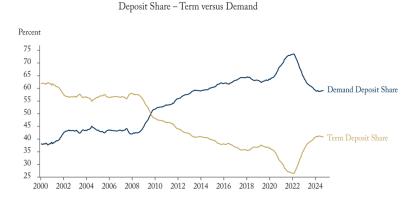In the 2014/15 fiscal year, federal government operating costs – expenses other than transfer payments – came to $81.6 billion. That was almost unchanged from four years earlier. In the years since, federal overhead has increased sharply. The 2021 budget forecast total operating costs, excluding extraordinary COVID programs, of $134.7 billion for the current fiscal year. More than half of these expenses are payroll and employee benefits such as health care and pensions.
Figures from the federal Treasury Board Secretariat show full-time-equivalent employment this year that is up 16 per cent from 2014/15.
Looking ahead, the 2021 budget suggests a sharp shift. It shows operating costs, excluding the extraordinary COVID programs, falling 7.7 percent in 2022/23, with a cumulative further decline of 3.5 percent between then and 2025/26. The federal budget implies cuts to the government’s payroll. Indeed, federal employment is set to fall five per cent from now to 2023/24 according to Treasury Board’s projections. That would be quite a reversal. It has not figured in speeches by the finance minister or prime minister. It is an unlikely plank in any federal party’s platform for the next election.
The budget says nothing about how the government will achieve this austerity. Canadians need more information from the federal government about why its operating costs are up so much and how it plans to bring them down. Is that forecast serious? If it is, what’s the plan?
To learn more about projected federal employment cuts, read “Ottawa's unheralded austerity plan: Cuts to the federal government's payroll”, by William Robson and Alexandre Laurin.





